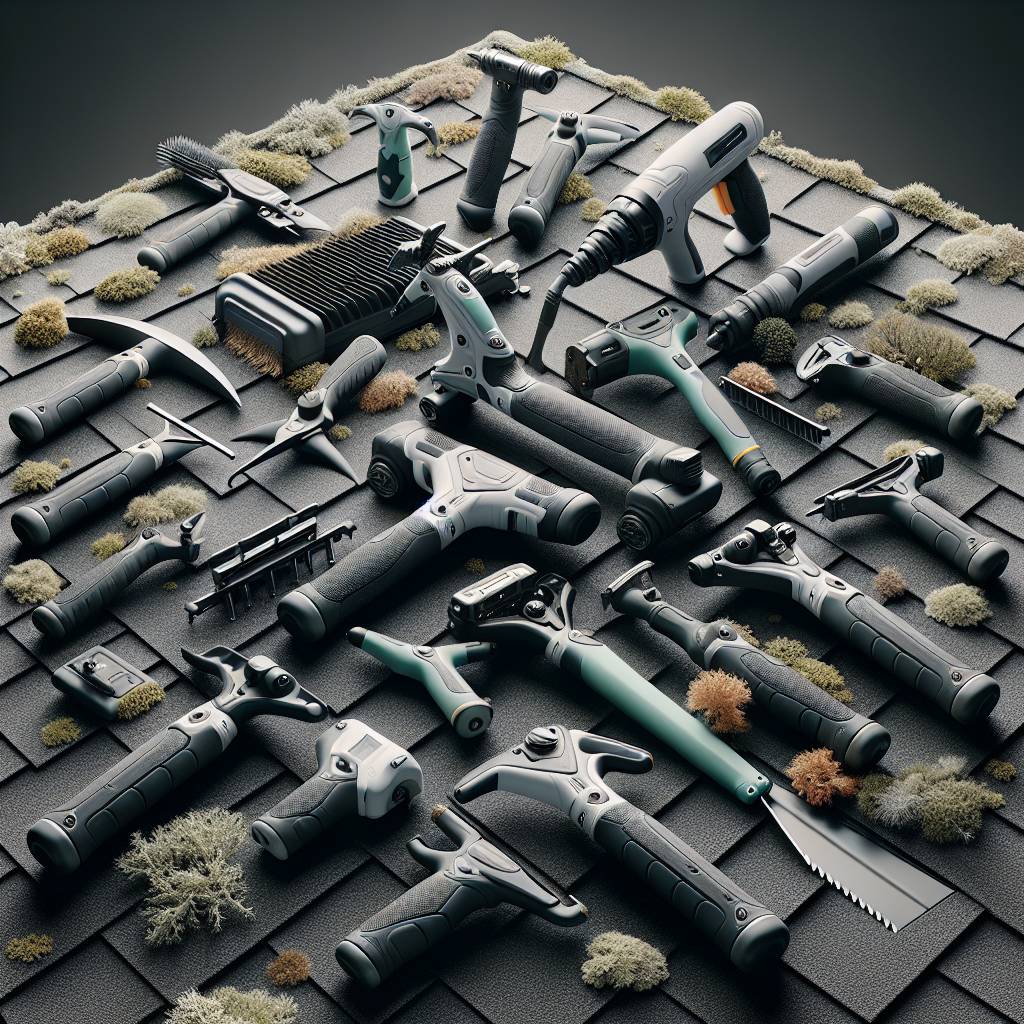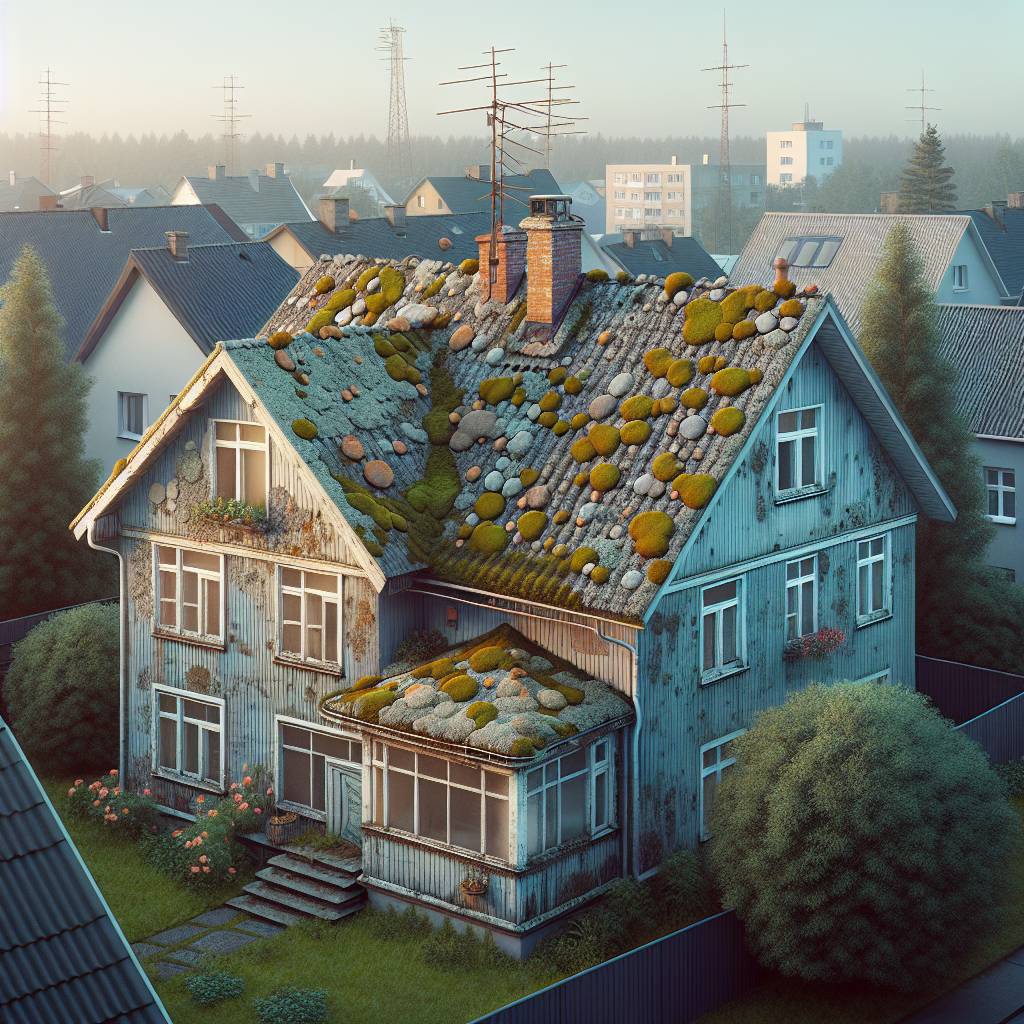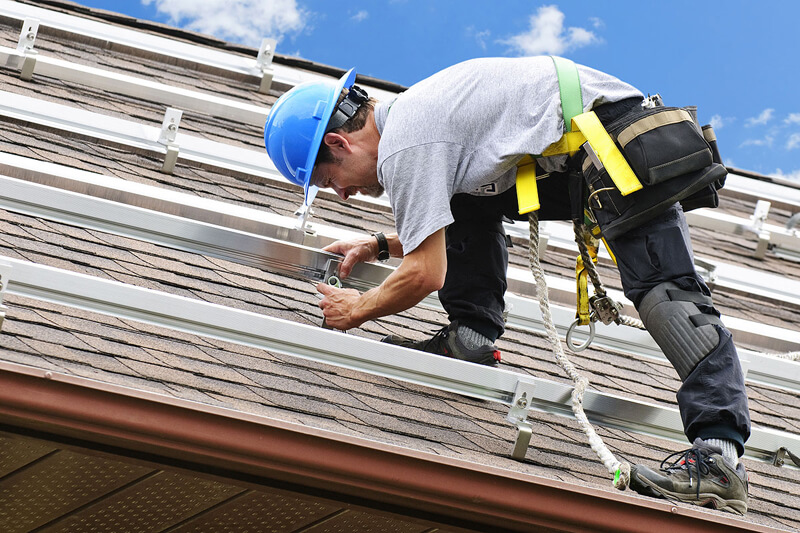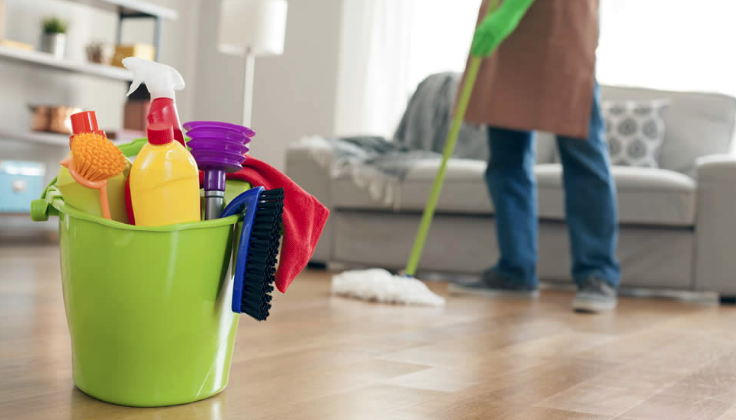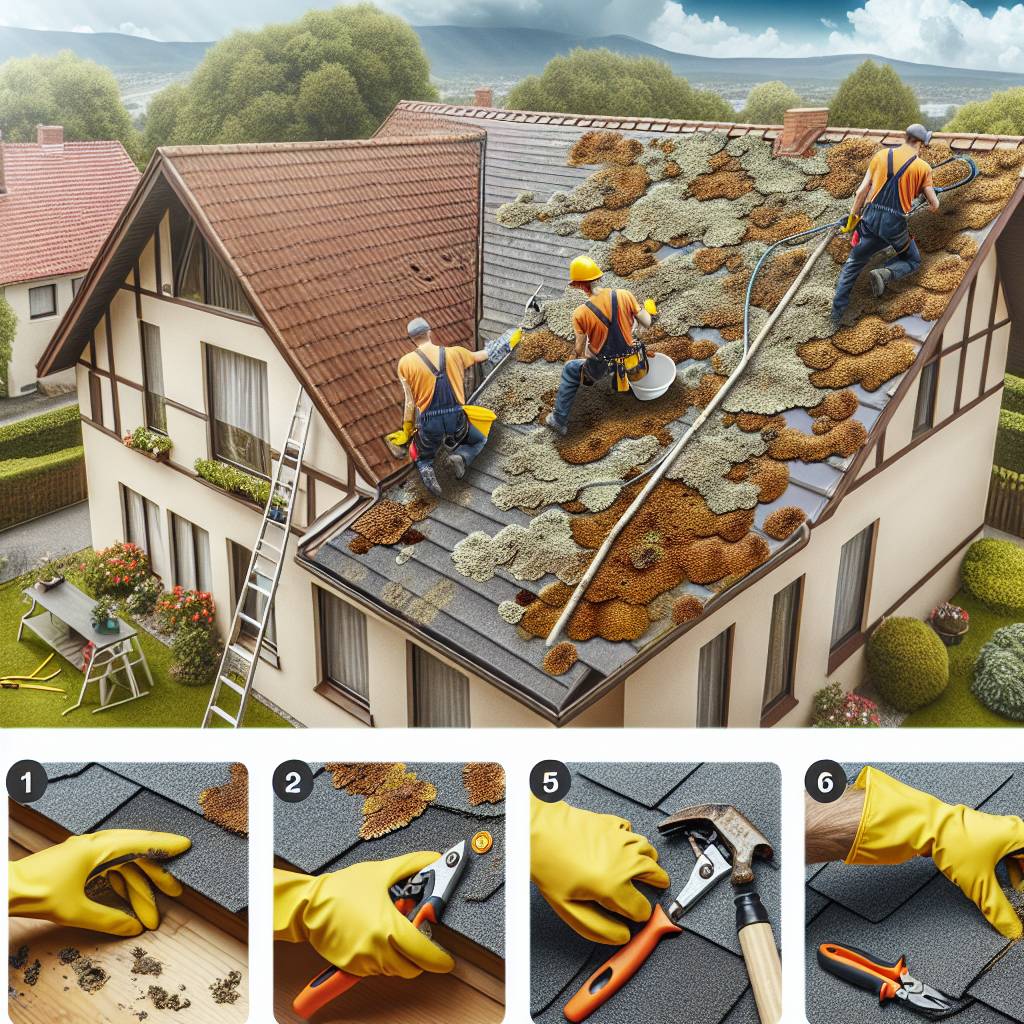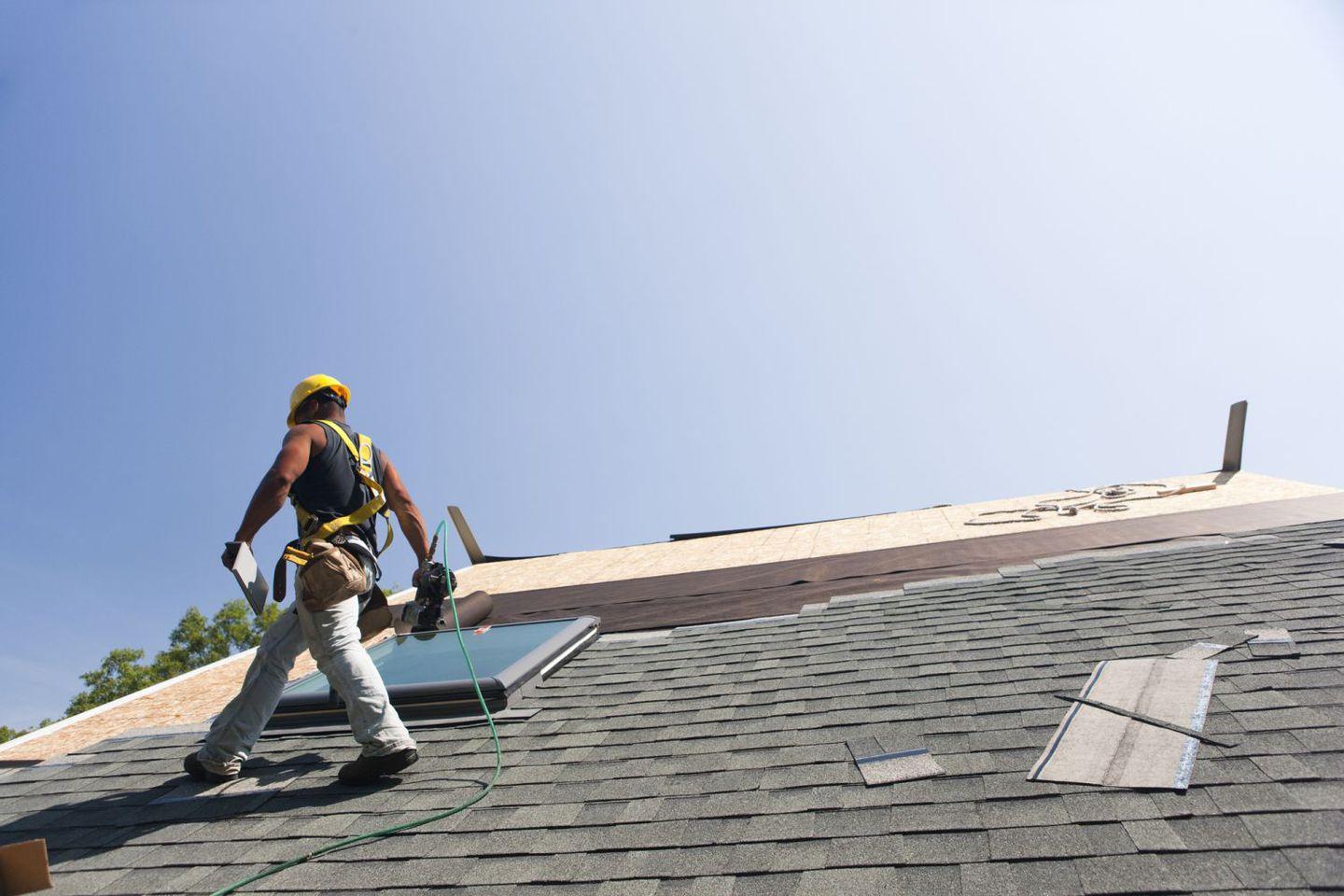Tired of dealing with stubborn lichen on your roof? Looking for innovative tools and equipment to make the removal process more efficient? We’ve got you covered. In this post, we’ll explore cutting-edge solutions for tackling lichen buildup on roofs, providing insights into the latest advancements in the field. From high-powered pressure washers to eco-friendly chemical treatments, we’ll delve into a range of options designed to simplify and streamline the removal of these persistent organisms. Whether you’re a homeowner seeking DIY solutions or a professional contractor looking for top-notch equipment like roof wash and bleach, this comprehensive guide will equip you with the knowledge needed to bid farewell to lichen once and for all.
Key Takeaways
- Regularly inspect your roof for lichen and moss, as early detection allows for easier removal and prevents damage.
- Utilize a pressure washer, stiff brush, safety gear, and environmentally friendly cleaning solutions for efficient and safe lichen removal.
- Prioritize safety by preparing the work area, using proper safety equipment, and following recommended techniques during the lichen removal process.
- Ensure the roof is adequately prepared by clearing debris, trimming nearby trees, and protecting surrounding plants before lichen removal.
- Invest in the right equipment such as pressure washers, soft wash systems, and protective gear to safely and effectively remove lichen from roofs.
- Consider eco-friendly preventive measures like zinc strips or copper wires to deter future lichen and moss growth.
Identifying Lichen and Moss on Roofs
Characteristics of Lichen and Moss
Lichen can be identified on roofs as green, gray, or black patches. It has a crusty appearance and tends to grow on shingles in areas with minimal sunlight exposure. On the other hand, moss appears as green and fuzzy, often covering larger sections of the roof. Both lichen and moss are common culprits for roof damage if left untreated.
Lichen is known to thrive on roofs with high moisture levels. When it grows on roof shingles, it can cause them to deteriorate over time due to its acidic nature. Similarly, moss tends to retain moisture, which could seep into the asphalt shingles of the roofing material.
Impact on Roof Structures
If not addressed promptly, lichen and moss growth can lead to severe structural damage. The presence of these organisms can compromise the integrity of the roof by causing decay in specific sections where they proliferate.
The accumulation of lichen or moss may result in clogged gutters or downspouts, leading to water pooling on certain areas of the roof surface. This standing water, if not addressed, could eventually penetrate beneath the shingles, causing rotting or weakening of underlying materials.
Necessary Materials for Efficient Lichen Removal
Soft-bristle Brush
Using a soft-bristle brush is essential. This tool allows you to effectively scrub away the lichen without causing any damage to the roof surface. The gentle bristles can dislodge the lichen growth, including its root-like structures, without scraping or scratching the roof.
A soft-bristle brush and roof wash ensures that you don’t leave behind any remnants of the lichen that could lead to regrowth. It’s important to use a brush with bristles that are not too stiff, as this could potentially cause damage to shingles or tiles during the removal process.
Biodegradable Lichen Remover
An effective and environmentally friendly solution for lichen removal is a biodegradable lichen remover. This type of cleaner is safe for both the environment and your roof. It works by breaking down and loosening the grip of lichen on the roof’s surface, making it easier to remove using a soft-bristle brush or water pressure.
Using a biodegradable cleaner also helps prevent any potential harm to surrounding vegetation when rinsing off the treated area after removing the lichen. It reduces environmental impact compared to harsh chemical cleaners often used in traditional cleaning methods, such as roof wash.
Safety Goggles and Gloves
During lichen removal, protecting yourself from potential chemicals or debris is crucial. Wearing safety goggles shields your eyes from splashes of cleaning solutions or dislodged particles while brushing off lichens. Furthermore, wearing gloves safeguards your hands from direct contact with cleaning agents and prevents injury from sharp debris present in aged moss and lichens.
These safety measures ensure that you can carry out efficient lichen removal safely without risking exposure to harmful substances commonly found in some cleaning solutions designed for this purpose.
Safe and Effective Lichen Removal Techniques
Soft-Bristle Brush
Gentle scrubbing with a soft-bristle brush is an essential technique for effectively removing lichen from roofs. This method allows you to physically dislodge the lichen without causing damage to the roof’s surface. By using a soft-bristle brush, you can target specific areas where lichen growth is prominent, ensuring thorough removal without compromising the integrity of the roofing material.
Regularly employing this simple yet effective tool as part of your maintenance routine can significantly contribute to preventing lichen buildup on your roof. The gentle scraping action of the brush helps eliminate existing lichen while also deterring its regrowth. When combined with other preventative measures such as keeping gutters clean and trimming overhanging branches, using a soft-bristle brush becomes even more impactful in maintaining a lichen-free roof.
Biodegradable Lichen Remover
Utilizing a biodegradable lichen remover offers an environmentally friendly and safe approach to eliminating lichen from roofs. These specially formulated solutions are designed to break down stubborn lichens without posing any risk to the surrounding vegetation or ecosystem. By choosing biodegradable products, you not only ensure that your roof remains undamaged but also contribute positively to environmental preservation efforts.
When selecting a biodegradable remover, look for one that is specifically labeled for use on roofs and exterior surfaces. These products are tailored to address the unique challenges posed by rooftop environments while remaining gentle on underlying materials such as shingles or tiles. Applying a biodegradable solution according to manufacturer instructions guarantees efficient removal of existing lichens while safeguarding against potential harm caused by harsh chemicals.
Preparing Your Roof for Lichen Removal
Clearing Debris and Loose Materials
Before using innovative tools and equipment for efficient lichen removal from roofs, it’s crucial to prepare the roof surface. Start by clearing any debris or loose materials from the roof. This step is essential as it ensures better access for lichen removal. By removing debris like leaves, branches, or other items, you create a clear workspace for the upcoming removal process.
Inspect the roof surface meticulously to identify any areas with loose materials such as twigs, dirt, or leaves. These can obstruct the lichen removal process and may even damage your tools if not removed beforehand. Once all these are cleared away, you can proceed with inspecting your roof thoroughly.
Inspecting for Damaged Areas
Inspecting your roof before starting the lichen removal process is essential in identifying any damaged areas that may need repair prior to treatment. Look out for cracked or broken shingles, damaged flashing around chimneys or skylights, and any signs of water damage on the roofing material itself.
By carefully examining your roof at this stage, you’ll be able to address potential issues proactively before they worsen during lichen treatment. It’s important to ensure that your roofing structure is in good condition before proceeding with lichen removal to avoid exacerbating existing problems.
Protecting Nearby Plants and Shrubs
Cover nearby plants or shrubs with plastic sheets to protect them from potential damage during the lichen removal process. While innovative tools make lichen removal more efficient than traditional methods like pressure washing which could harm surrounding greenery – taking this extra precaution helps safeguard delicate plants from any chemical solutions used in some advanced techniques.
Plastic sheet coverings act as a barrier against overspray when using certain cleaning agents while ensuring that no residue comes into contact with nearby vegetation post-treatment.
Proper Equipment for Safe Lichen Extraction
Sturdy Ladder
A sturdy ladder is essential for safe access to the roof during the lichen removal process. It should be tall enough to reach the affected areas, and it’s crucial that it’s in good condition without any defects or damages. This ensures stability and reduces the risk of accidents while working at heights.
A sturdy ladder with proper safety measures provides a stable platform for reaching the roof surface. It allows you to access different sections of the roof where lichen growth is prominent, ensuring thorough removal. Without a reliable ladder, accessing these areas can be challenging and unsafe, leading to incomplete lichen removal.
Non-Slip Shoes
Non-slip shoes are vital when working on a roof surface as they provide stability and reduce the risk of slipping or falling. These specialized shoes offer enhanced traction on various surfaces, including those covered with lichen growth or moss. They help maintain balance and prevent accidental slips while moving around on the roof.
Wearing non-slip shoes significantly reduces the likelihood of accidents caused by slipping on wet or uneven surfaces due to lichen infestation. By providing secure footing, they enable individuals to move confidently across the roof during lichen removal activities without compromising their safety.
Safety Harnesses
Safety harnesses play a critical role in ensuring additional protection against falls during the lichen removal process. When secured properly, they act as a reliable safety measure in case of accidental slips or loss of balance while working at heights. Safety harnesses are designed to distribute weight evenly and minimize impact forces if a fall occurs.
Incorporating safety harnesses into your equipment ensemble enhances overall safety by reducing potential injuries from falls off roofs during lichen extraction tasks. They serve as an indispensable precautionary measure that provides peace of mind when operating at elevated levels.
Applying Lichen and Moss Remover Effectively
Following Product Instructions
When using innovative tools and equipment for efficient lichen removal from roofs, it’s crucial to carefully follow the product instructions. These instructions are designed to ensure the maximum effectiveness of the remover. By following them, you can achieve optimal results in removing lichen without causing harm to your roof.
It’s important to note that different products may have varying application methods, dilution ratios, and safety precautions. Therefore, always refer to the specific guidelines provided by the manufacturer of the lichen remover you’re using. This will help you apply the product correctly and avoid any potential damage or ineffective results.
For example:
- Some lichen removers may require dilution with water before application, while others can be used directly.
- Certain products might recommend applying during specific weather conditions or temperatures for best outcomes.
Allowing Sufficient Penetration Time
After applying the lichen remover according to the product instructions, allow sufficient time for it to penetrate and break down the lichen growth on your roof. This penetration time is essential as it allows the active ingredients in the remover to effectively weaken and loosen the grip of lichens on various surfaces.
By giving ample time for penetration, you enable a more thorough removal process when scrubbing or rinsing later on. It also helps ensure that even deeply embedded lichens are adequately treated by allowing enough contact time with the remover.
For instance:
- Some high-quality removers may require 15-30 minutes of dwell time before they are ready for further action.
- The recommended penetration duration may vary based on factors such as temperature, humidity levels, and thickness of lichen growth.
Thorough Roof Rinsing
Once you’ve removed most of the lichens from your roof surface after scrubbing or brushing as per product recommendations, thoroughly rinse off any remaining residue. This step is crucial because lingering remnants could potentially cause further damage if left unchecked over time.
Rinsing ensures that all traces of both the remover solution and loosened debris are completely washed away from your roof’s surface. It not only helps prevent any adverse effects but also leaves behind a clean finish once drying is complete.
To illustrate:
- Use a garden hose or pressure washer at low settings when rinsing your roof after applying a lichen remover.
- Pay extra attention to areas where runoff water tends to accumulate so that no residue remains trapped there.
Eco-Friendly Solutions for Lichen Prevention
Regular Maintenance
Regular maintenance is crucial in preventing lichen growth on roofs. Cleaning gutters and removing debris are essential steps to minimize moisture retention, which lichens thrive on. By ensuring that the roof is free from organic matter, such as leaves and twigs, you can create an environment less conducive to lichen development.
Installing zinc or copper strips on the roof is an effective method for inhibiting lichen and moss growth. These metals possess natural antimicrobial properties that deter the proliferation of algae, mosses, and lichens. The rainwater runoff from these metal strips carries trace amounts of zinc or copper onto the roof’s surface, creating an inhospitable environment for lichens to grow.
Tree Branch Trimming
Trimming tree branches near the roof plays a significant role in preventing lichen growth. Overhanging branches can create shade and retain moisture on the roof’s surface, providing ideal conditions for lichen colonization. By reducing shade and improving air circulation around the roof area through branch trimming, you effectively minimize favorable conditions for lichens to thrive.
Implementing these preventive measures not only helps in controlling existing lichens but also acts as a proactive approach against their future growth. By combining regular maintenance practices with strategic installations like metal strips and tree branch trimming, homeowners can significantly reduce the likelihood of encountering persistent issues related to lichen infestation on their roofs.
Installing Protective Measures Against Moss Growth
Proper Ventilation
Proper ventilation in the attic is crucial for regulating temperature and moisture levels. This prevents moss growth by creating an environment that is less conducive to its development. When the attic has good ventilation, it helps in keeping the roof dry, making it difficult for moss to thrive.
Without proper ventilation, warm and moist conditions can lead to the formation of a suitable habitat for moss. As a result, ensuring adequate airflow in the attic not only benefits your home’s overall health but also plays a significant role in preventing moss from taking hold on your roof.
Applying Moss-Resistant Coating
Applying a moss-resistant coating to the roof surface provides long-term protection against moss infestation. These coatings are formulated with ingredients that deter moss growth, effectively safeguarding your roof from this persistent issue.
Moss-resistant coatings act as a protective barrier against environmental factors that promote moss development. By applying this type of coating, you create an inhospitable environment for moss spores to settle and propagate on your roof’s surface.
Regular Gutter Cleaning
Regularly cleaning gutters and downspouts is essential for preventing water buildup that can contribute to moss growth. Clogged gutters collect debris such as leaves and twigs which trap water during rain or snowfall. This standing water becomes an ideal breeding ground for various plant life including lichen and other organisms like algae.
Choosing Between DIY and Professional Lichen Removal Services
Cost-Effective DIY Lichen Removal
Opting for a do-it-yourself approach can be a cost-effective solution. By tackling the removal process on your own, you have the potential to save money that would otherwise be spent on professional services. However, it’s important to note that this method demands a significant amount of time, effort, and attention to safety precautions.
Removing lichen from roofs requires meticulous manual work and may involve climbing ladders or working at heights. While this approach can save you money in terms of service costs, it’s crucial to consider whether you have the necessary time and physical capability to undertake such a task. Ensuring your safety during the removal process is paramount.
Expertise and Specialized Equipment with Professional Services
Professional lichen removal services bring years of experience and expertise in efficiently eliminating lichen from roofs. These experts are equipped with advanced techniques and specialized tools specifically designed for effective lichen eradication. Their knowledge allows them to identify the most efficient methods for removing lichen without causing damage to the roof surface.
By enlisting professional services, homeowners can benefit from not only the expertise of trained professionals but also access to equipment that may not be readily available for individual use. For instance, power washing equipment with adjustable pressure settings is often employed by professionals for thorough yet gentle cleaning of roof surfaces.
Considerations When Deciding Between DIY or Professional Services
When deciding between do-it-yourself lichen removal or hiring professional services, several factors should be taken into account:
- Size of Infestation: Assessing the extent of lichen infestation on your roof is crucial when making this decision.
- Comfort Level: Evaluate your comfort level with undertaking tasks that require physical exertion as well as working at heights.
- Budget Constraints: Consideration must also be given to budget limitations when determining whether DIY efforts or professional assistance are more suitable for addressing lichen growth on your roof.
Closing Thoughts
You’ve now got the lowdown on tackling lichen and moss on your roof. Armed with the right gear and know-how, you can bid adieu to those pesky roof invaders. Remember, safety first! Whether you opt for a DIY approach or call in the pros, make sure you’re clued up on the best practices.
Ready to give your roof some TLC? Get those tools out and show that lichen who’s boss! Don’t let it rain on your parade – take charge and keep your roof in top-notch condition.
Frequently Asked Questions
What are the signs of lichen and moss infestation on roofs?
Lichen and moss appear as green or brown patches on the roof surface. They thrive in damp, shaded areas and can cause discoloration and damage to roofing materials.
How do I prepare my roof for lichen removal?
Before removing lichen, clean the roof surface to remove debris and dirt. Ensure proper safety measures are in place, such as using a stable ladder and wearing appropriate protective gear.
What equipment is essential for safe lichen extraction?
Essential equipment includes a soft-bristled brush or scraper, low-pressure sprayer, safety goggles, gloves, and a mild cleaning solution. These tools help safely remove lichen without causing damage to the roof.
Can I prevent future lichen growth with eco-friendly solutions?
Yes, you can use eco-friendly solutions like zinc strips or copper wires installed at the ridge of your roof. These solutions release metal ions that inhibit lichen growth without harming the environment.
Should I opt for professional lichen removal services or DIY methods?
The decision depends on factors like your comfort level with heights, access to necessary equipment, and extent of infestation. If unsure about safety or effectiveness, consulting professionals might be beneficial.
